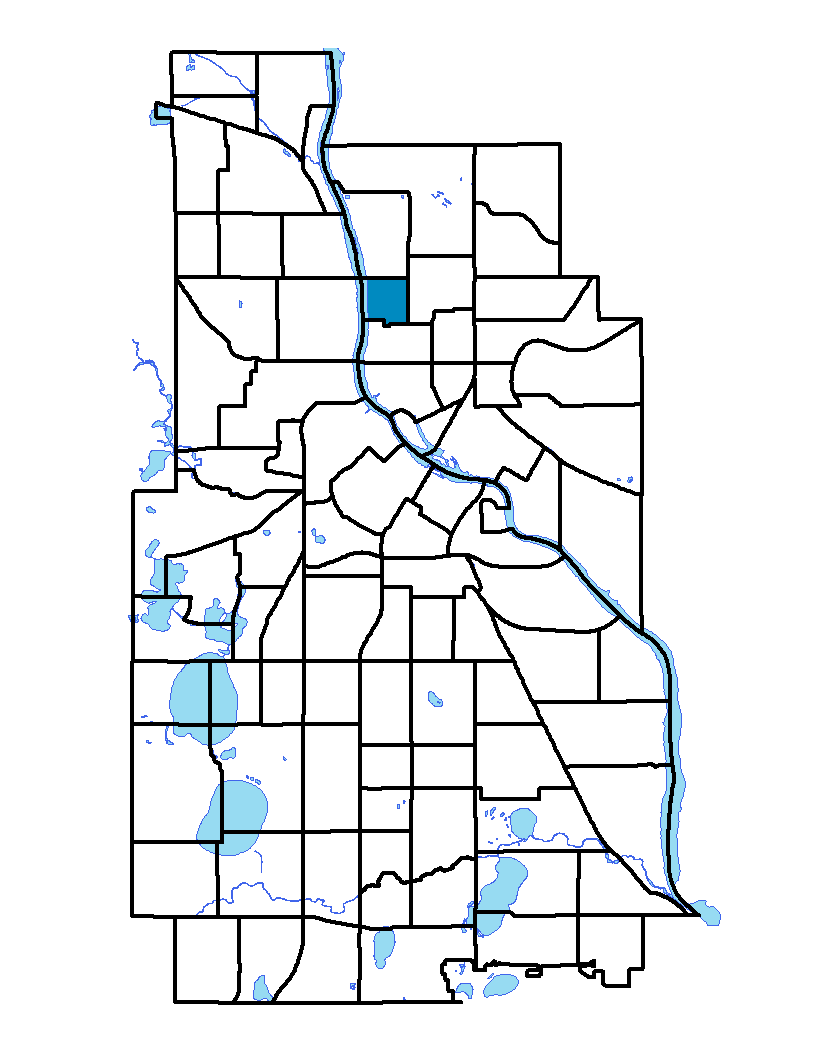Bottineau neighborhood is located in northeast Minneapolis. It is bordered by the Mississippi River on the west and University Avenue to the east. Lowry Avenue NE is the northern extent of the neighborhood, which runs to 16 th/17 th avenues NE in the south. This small neighborhood is named after the legendary pioneer, explorer and leader Pierre Bottineau who bought land here in 1845. Bottineau neighborhood has a rich history with the large number of ethnic groups that have settled in this area over the years. Today the community has a population of 1,254 people and is a destination for many artists to live and work. Bottineau has a nice mix of amenities including a large park, a library, and its close proximity to downtown.
To learn more about the neighborhood association visit: www.bottineauneighborhood.org
Indicator Details
| Indicators |
Primary Domain |
Indicator Value | Rank | Tier |
|---|---|---|---|---|
| Transit Accessibility | Transportation | 175 | 79 | Bottom |
| Commute Mode Share | Transportation | 25.0% | 51 | Middle |
| Household Transportation Costs | Transportation | 17.2% | 45 | Middle |
| Pedestrian Connectivity | Transportation | 171.6 | 17 | Top |
| Residential Mobility | Social Cohesion | 76.1% | 52 | Middle |
| Voter Participation | Social Cohesion | 28.3% | 37 | Middle |
| Walkability | Neighborhood Characteristics | 59 | 52 | Middle |
| Offsite Alcohol Outlets | Neighborhood Characteristics | 1 | 6 | Top |
| Food Desert | Neighborhood Characteristics | -% | - | Data N/A |
| Tree Cover | Natural Areas | 28.2% | 45 | Middle |
| Access to Parks and Open Space | Natural Areas | 6.8% | 36 | Middle |
| Violent Crime | Health Systems and Public Safety | 58.6 | 53 | Middle |
| Chronic School Absence | Health Systems and Public Safety | 82.6% | 44 | Middle |
| Low Birth Weight | Health Systems and Public Safety | 6.7% | 36 | Middle |
| Motor Vehicle Collisions | Health Systems and Public Safety | 58.3 | 81 | Bottom |
| Preventable Hospitalizations | Health Systems and Public Safety | 1.5 | 18 | Top |
| Vacancy Rates | Housing | 11.7% | 67 | Bottom |
| Age of Housing | Housing | 81.9% | 33 | Middle |
| Blood Lead Levels in Children | Housing | 3.6% | 36 | Middle |
| Excessive Housing Cost Burden | Housing | 34.3% | 57 | Middle |
| Public Assisted Households | Employment Opportunities | 32.6% | 62 | Bottom |
| Employment Rate | Employment Opportunities | 65.2% | 59 | Bottom |
| Long-Term Unemployment | Employment Opportunities | 7.6% | 64 | Bottom |
| Travel Time to Work | Employment Opportunities | 23.1 minutes | 56 | Middle |
| Residential Proximity to Traffic | Environmental Hazards | 0.0% | 1 | Top |
| Proximity to Brownfield Sites | Environmental Hazards | 11.5% | 54 | Middle |
| School Proximity to Traffic | Environmental Hazards | 0.0% | 1 | Top |
| Proximity to Superfund Sites | Environmental Hazards | 0.0% | 1 | Top |
| Toxic Releases from Facilities | Environmental Hazards | 92.3% | 79 | Bottom |
| Reading Proficiency | Educational Opportunities | -% | - | Data N/A |
| Adult Educational Attainment | Educational Opportunities | 81.0% | 67 | Bottom |
| High School Graduation Rate | Educational Opportunities | -% | - | Data N/A |
| School Readiness Scores | Educational Opportunities | -% | - | Data N/A |
| Preschool Enrollment | Educational Opportunities | 34.9% | 62 | Bottom |
| Business Retention | Economic Health | 7.0% | 4 | Top |
| Access to Mainstream Financial Services | Economic Health | 40.8% | 74 | Bottom |
| Local Business Vitality | Economic Health | 57.1% | 35 | Middle |

